
On the night of Jul 13/14, 2020, under good conditions, I acquired images for astrometry of two nearby stars. One was Ross 248 , and the other GX And ; the latter is actually a double star, with two components separated by about 35 arcsec moving together.
I also attempted to observe the occultation of a star (TYC 1188-651-1) by asteroid (256) Anna, but saw no dip in the star's light at the expected time. I was slightly outside the predicted path, so no big surprise.
This is one of the stars that a capstone student may study over the next year in a project involving parallax. Ross 248 is a relatively faint red star surrounded by many other stars of similar brightness, so it's a good candidate for high-precision parallax measurements.
The main setup was:
Notes from the night:
The object is (currently) near position
RA = 23:41:55.27 Dec = +44:10:06.38 (J2000)
A chart of the field is shown below. The size of the chart is about 41 x 27 arcminutes. The noisy area at right (West) is the shadow of the guider's pickoff mirror.

I've marked the location of several comparison stars.
star UCAC4 B V r ------------------------------------------------------------------------- A UCAC4 671-120730 12.617 10.689 B UCAC4 671-120688 C UCAC4 671-120749 10.987 10.663 P kappa And 4.06 4.14 --------------------------------------------------------------------------
I took a photo of the finder TV's screen when pointing to Ross 248; this could be a useful reference for the future:
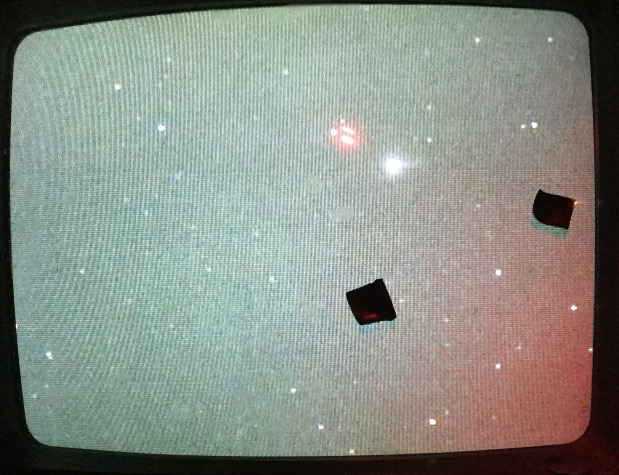
I ran the camera at the usual temperature of -20 C. Nothing out of the ordinary.

I took a series of 50 exposures of the field, using the R-band filter and an exposure time of 20 seconds.
Using the same techniques as described for earlier nights, I matched detected stellar positions to the Gaia DR2 catalog; as usual, I used a linear model and included all stars in the catalog.
I am continuing to use the box
cr=650 sc=1000 nr=1300 nc=1000mentioned in the entry for Jun 28, 2020 to avoid vignetting and coma.
This is my eighth measurement of Ross 248. The small hints of motion, negative in both directions, are consistent with the expected path of the object.
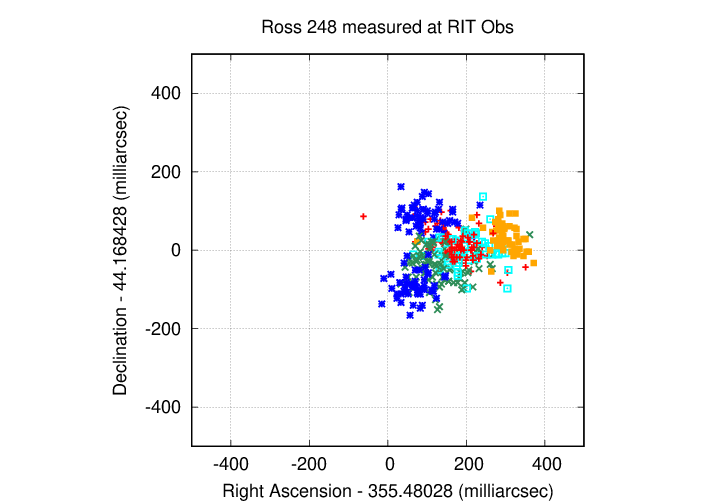
Like Ross 248, GX And is a nearby (binary) star which will be the target of a parallax project in the coming year. One of the two components is bright -- about mag V = 8 -- so one must use short exposures to prevent it from saturating the detector. That may mean that this system isn't as easy to measure as Ross 248 or some others.
The object is currently close to this position:
RA = 00:18:28.4 Dec = +44:01:31 (J2000)
but it does have a very high proper motion.
A chart of the field is shown below. The size of the chart is about 41 x 27 arcminutes. The noisy area at right (West) is the shadow of the guider's pickoff mirror.
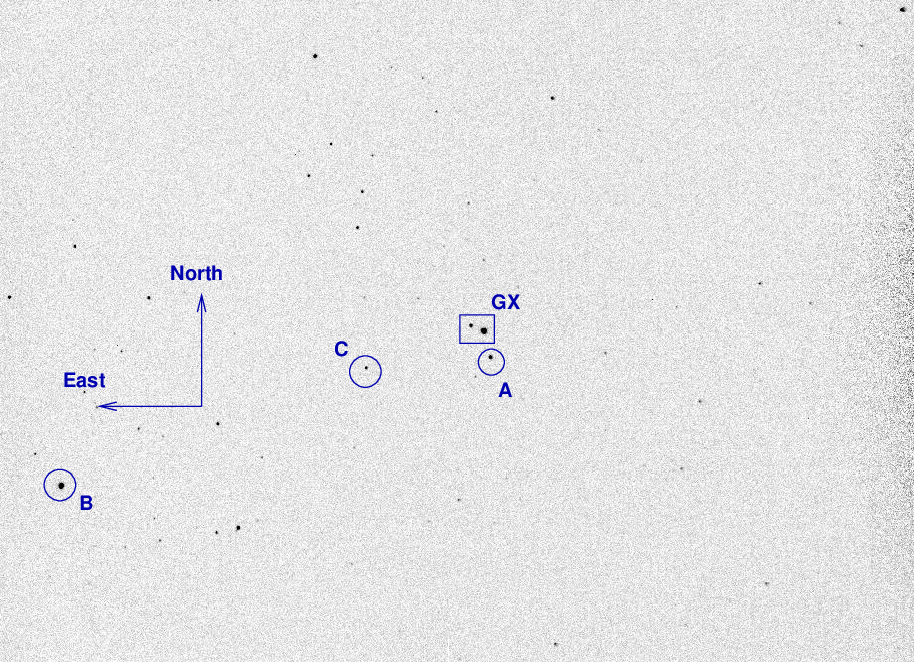
The two components of the GX And binary sit inside the box. I've marked the location of several comparison stars as well.
star UCAC4 B V r ----------------------------------------------------------- A 671-001473 9.939 9.790 B 670-001639 9.413 8.472 C 671-001509 12.712 11.421 11.001 -----------------------------------------------------------
I took a photo of the finder TV's screen when pointing to GX And; this could be a useful reference for the future:
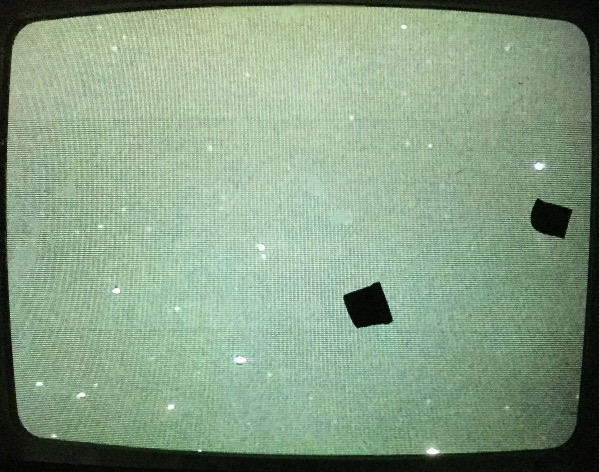
I took one series of 50 exposures of the field, using the R-band filter and an exposure time of only 5 seconds.
Using the same techniques as described for earlier nights, I matched detected stellar positions to the Gaia DR2 catalog.
The target is clearly moving in the positive RA direction, as we would expect from its known (large) proper motion.
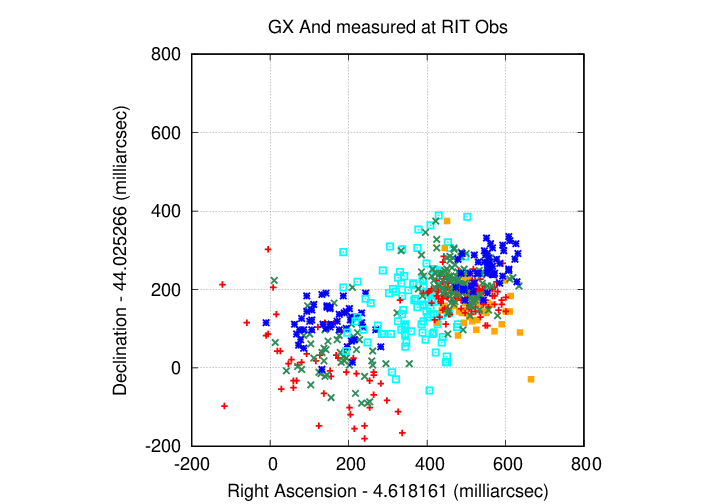
This morning, the International Occultations Timing Association predicted that the path of the occultation of TYC 1188-651-1 by asteroid (256) Anna would sweep very close to Rochester. We were just a bit east of the predicted shadow, but only by about two sigma, so I thought I'd try to observe it.
My plan was to put the Watec video camera on the small white finder telescope, run the video through the Kiwi OSD device, digitize the video, and record the results on my laptop. However, there were some problems -- not the least of which was that I didn't allow enough time for this project.
I watched from 07:40:00 to 07:43:00, and saw no dip in brightness. Oh, well. You can find a copy of my report here:
I should pratice setting everything up a night in advance next time.
Last modified 7/14/2020 by MWR.